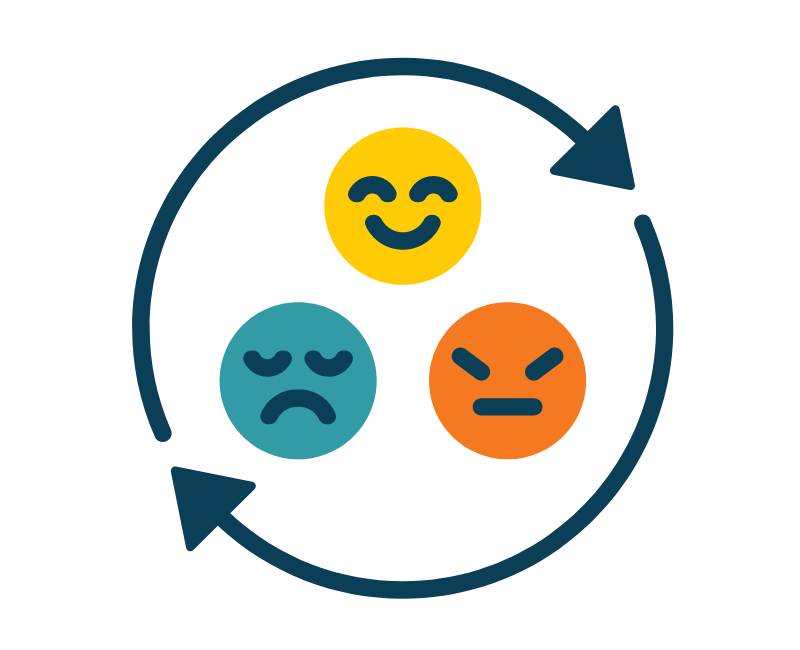What Is An Employee Wellness Program?
Employee wellness programs, also known as worksite wellness programs or employee well-being programs, refer to a collection of initiatives within an organization that promote healthy lifestyles among employees and, in some cases, their spouses and dependents. These programs address various dimensions of employee health and well-being.
Benefits Of Wellness Programs
Employee wellness programs offer benefits for employers and employees: they cultivate a healthier, more engaged workforce and drive long-term positive health changes. Employees enjoy better health, less stress, and increased job satisfaction, while employers see gains in productivity, lower absenteeism, and potentially reduced spending on healthcare costs.
Moreover, these programs are powerful strategies to retain and attract talent in the modern working world. Studies show that nearly 90% of employees at companies with wellness initiatives report higher job satisfaction and are more likely to recommend their employer.
Components Of A Well-Run Wellness Program
A thoughtfully designed wellness program consists of the following key components to ensure its success and sustainability.
Holistic Approach To Well-Being
The notion of wellness is frequently associated with gym memberships or green smoothies, limiting the scope to physical well-being. However, well-being is a result of interactions among several dimensions that, when nurtured in harmony, improve health and quality of life.
Effective wellness programs address and promote the following dimensions of wellness:
Physical

Emotional

Financial

Social

Occupational

Purpose

Intellectual

Environmental

Leadership Support
When leaders participate in wellness initiatives, it sets the tone for the entire organization, encouraging wider engagement and embedding health into the company culture. Leadership support can also translate into better funding and resources for wellness programs.
Effective leadership involvement includes:
- Regular participation in wellness activities
- Event engagement, such as having leaders kick off key wellness events
- Personal testimonials from leaders, making wellness tangible and relatable
Rewards & Incentives
Wellness program rewards and incentives foster immediate engagement and contribute to a lasting culture of health. While lifestyle change is ideally intrinsically motivated, incentives can kickstart healthier choices, paving the way for sustained employee well-being. To promote authentic engagement when using rewards and incentives, consider the following:
- Continuous reward programs that provide regular, wellness-oriented incentives, promoting lasting lifestyle changes and rewarding dedication
- Lifestyle spending accounts (LSAs) the reimbursement process and encourage consistent engagement
- Affordable incentives such as recognition for dedicated participants, additional paid time-off, and company merchandise
Inclusivity
An inclusive wellness program accommodates the diverse needs of all employees, ensuring everyone can participate and benefit. Inclusivity in wellness means:
- Organizing varied wellness activities that cater to different interests, lifestyles, and abilities
- Offering on-demand, on-site, and remote options, allowing employees to choose the setting they find most comfortable
- Designing DEIB-friendly programs, including offering diverse wellness providers and using inclusive promotional materials
Lifestyle-Based
Unlike clinically focused wellness programs, which target specific health conditions, lifestyle-based programs emphasize daily habits that contribute to overall well-being. Such programs address broader workforce needs and weave wellness into everyday life. Embracing a lifestyle-based wellness program could include:
- Administering personal wellness assessments (PWAs) for employees to self-assess their health based on lifestyle behaviors
- Providing variety and customization in wellness initiatives, allowing employees to tailor their wellness journeys
- Taking an integrative approach by encouraging regular stretch breaks, organizing walking meetings, and other initiatives that seamlessly fit into the workday
Integrate Technology
Incorporating technology into wellness programs has become a standard practice for many organizations, boosting their effectiveness and accessibility. Effective technology integration includes:
- Utilizing a wellness platform that serves as a centralized hub for well-being resources, challenges, communication, and analytics
- Encouraging the use of wearable devices for employees to monitor their physical activities, sleep patterns, and overall health metrics in real time
- Ensuring compatibility between the wellness platform and wearable devices, enabling seamless integration of data across systems
Employee Feedback
Integrating employee feedback ensures wellness programs truly meet their needs and preferences while fostering a sense of ownership. Creating multiple channels for input encourages all employees to contribute their voices and keeps programs relevant, engaging, and beneficial over time. Strategies for soliciting feedback include:
- Employee interest surveys
- Suggestion boxes for open-ended feedback
- Focus groups or dedicated feedback meetings
Measure Success
Determining the return on investment (ROI) of wellness programs is complex and overlooks benefits that may not yield immediate returns (i.e., improved employee morale, increased productivity, etc.). Value on investment (VOI) offers an alternative approach that assesses the broader impact of wellness programs beyond financial returns. It considers both quantitative and qualitative factors, including employee engagement, retention, and well-being.
By estimating both ROI and VOI, organizations can acknowledge both the financial returns and intangible benefits of their wellness programs, offering a more comprehensive view of their effectiveness.
Examples Of Wellness Program Initiatives

To help employees improve their well-being, companies can employ various solutions depending on the unique needs of their organization.
Listed below are the top examples of wellness program offerings, providing a guide of what is available and context on who each solution may be best suited for.
In this list:
- Wellness Challenges
- Mental Health Resources
- Telemedicine
- Fitness Classes
- Stress Management/Resilience
- Sleep Management
- Tobacco Cessation
- Health Education/Literacy
- Lifestyle Spending Account (LSA)
- Flu Shots
- Free Healthy Food
- Gym Reimbursement
- Mindfulness/Meditation
- Financial Counseling/Planning
- Health Coaching
- Health Fairs
- On-Site/Near-Site Clinics
- Disease Management
- Physician Engagement (Annual Physical)
- Weight Management
- Biometric Screening
- Health Risk Assessment (HRA)
Wellness Challenges
Wellness challenges are a set of activities and contests designed to encourage employees to engage in healthy behaviors. They are also great team building tools that help improve employee engagement and a sense of belonging within the organization. Wellness challenges can be designed to address a broad range of topics, including physical, mental, financial, social, and environmental well-being. With advancements in wearable devices and mobile apps, tracking is much simpler and more accessible than ever.
Mental Health Resources
Providing access to mental health resources, such as counseling sessions, online mental health services, and workshops on mental well-being can significantly boost employee well-being. These resources help break down the stigma associated with mental health issues and ensure employees have the support they need to manage stress, anxiety, depression, and other mental health challenges.
Telemedicine
With the promise of controlling costs with more affordable visits, telemedicine has surged over the last decade. It involves the use of electronic communications and software to provide clinical services to patients without an in-person visit. It is frequently used for follow-up visits, management of chronic conditions, medication management, specialist consultation, and other clinical services.
Fitness Classes
For companies aiming to encourage fitness during the workday, fitness classes are an effective solution. These classes not only deliver a great workout but also foster camaraderie, fun, and team-building. Additionally, research suggests that group exercise significantly boosts mental health. For businesses without suitable spaces, sponsoring fitness classes at third-party facilities is an excellent alternative.
Beyond physical exercise, fitness classes can include activities like guided meditation, improving well-being and reducing stress without extensive facility requirements.
Stress Management/Resilience
Stress management and resilience programs help employees practice emotional regulation and build confidence against future stressors. Effective tools include workshops on stress reduction techniques and access to digital platforms for stress management.
Sleep Management
Sleep management programs highlight the importance of sleep and provide employees with tools to improve sleep quality. These can include educational resources on sleep hygiene, discounts on sleep aids, and policies that encourage healthy work-life boundaries to prevent burnout.
Tobacco Cessation
Smoking rates among US adults have been on a steady decline since the mid-1960s, but they have plateaued in recent years, settling at around 14%. However, with the rising popularity of e-cigarettes and other tobacco products, nearly one out of four U.S. adults could benefit from a tobacco cessation program. Although usage has dropped significantly, the adverse impact of tobacco use is so strong that employers continue to see financial and non-financial reasons to pursue cessation programs. A tobacco cessation program can (and should be) multi-faceted, but the main goal is to provide tobacco smokers the support and resources they need to quit.
Health Education/Literacy
Health education/literacy programs are usually the first initiative to be offered at organizations due to their scalability and low cost. These programs provide employees with access to relevant, quality, and timely health content through on-site seminars or online webinars, as well as through other media such as newsletters or wellness brochures. With the growing amount of misinformation available to consumers via the internet, employer-facilitated health literacy is becoming increasingly important. These educational sessions can be tailored to address any dimension of wellness as employers see fit for their organization.
Lifestyle Spending Account (LSA)
A lifestyle spending account (LSA) is an employer-provided benefits account that supports diverse workforce needs. Employees are given a one-time or recurring stipend to pay for lifestyle and wellness-related products and services of their choice. This can include expenses like gym memberships, childcare, pet care, leisure activities, travel, and more. The key feature of an LSA is its flexibility, allowing employees to choose how to best use their funds based on individual preferences.
Flu Shots
Flu shot clinics mainly address employees' physical wellness. According to the Centers for Disease Control and Prevention (CDC), the flu costs the U.S. approximately $10.5 billion in direct costs, hospitalizations, and outpatient visits for adults. The indirect costs of lost productivity and sick leave for employers are also quite significant. Likely driven by recent flu seasons being some of the worse in decades, more companies are looking to launch flu shot clinics as part of their employee benefits. These clinics are usually one-day events with nurses coming to the office/facility and administering flu shots.
Free Healthy Food
Free food has always been an employee-favorite perk. However, salty chips and candies, while appealing, might not be the best option for a mid-afternoon snack. To promote healthy eating, organizations are opting to stock their kitchen with more nutritious options, such as snacks with whole grains, healthy fats, and protein. This perk falls under the umbrella of physical wellness, as it impacts nutrition.
Gym Reimbursement
For organizations looking to double down on physical well-being, providing standing desks might not be enough. Reimbursing employees for the membership cost of exercise facilities can encourage them to work out without eating into normal work hours (a potential tradeoff of offering on-site fitness classes). This is an attractive benefit, especially for millennials, who place high consideration on total rewards programs and benefits.
Mindfulness/Meditation
Mindfulness and meditation programs help employees reduce stress, improve focus, and increase resilience. These programs can be delivered through guided meditation sessions, mindfulness training workshops, or access to apps that employees can use at their convenience. Incorporating these practices into wellness offerings can help create a more mindful workplace environment, improving employee well-being and productivity.
Financial Counseling/Planning
As one of the "hottest" areas in many health and wellness programs, financial wellness offerings are rapidly rising in popularity. Many organizations enroll the assistance of financial professionals to provide employees with personalized counseling or financial planning. These sessions may be one-on-one (more expensive) or in a group format (more affordable).
Health Coaching
Employee health coaching refers to personalized educational sessions with a certified health expert that can be conducted in either one-on-one or group formats. Some companies offer health coaching as a next step for employees identified as high-risk through a biometric screening or health risk assessment, while others extend the benefit to anybody in the organization who is looking for guidance and support to improve their health. Because health coaching sessions are personalized, they can address any dimension of well-being for which employees request assistance.
Health Fairs
Health fairs are educational and interactive events where employers can provide employees with basic health education as well as overviews on health benefits available to them. Usually scheduled during the workday, employees can take a break to visit booths to learn about a number of well-being topics and identify helpful benefits that they may not be using. Similar to other on-site events, remote employees and satellite offices will not be able to participate in the event, so employers should take this into consideration.
On-Site/Near-Site Clinics
These clinics provide convenient access to health care for employees and are also staffed with clinicians who are familiar with the organization's policies, benefit plans, and work environment. In many cases, on-site or near-site clinics can resolve a majority of its visits without referring employees to other facilities, which can result in cost-reduction for both the organization and its employees.
Disease Management
Disease management programs are structured treatment plans that aim to help people better manage chronic disease(s) and maintain and improve quality of life. A team of health professionals, including physicians, nurses, pharmacists, dietitians, etc., are involved to educate participants on an ongoing basis about how to better manage their conditions. Some programs might be more patient-directed and include counseling, home visits, 24-hour call centers, and appointment reminder systems to support individuals who are managing their chronic condition(s). Increasingly, these programs are becoming digitized and more affordable as less human intervention is required.
Physician Engagement (Annual Physical)
Physician engagement programs encourage employees to participate in annual physical exams with their primary care providers. These programs can include incentives for completing annual check-ups and creating channels for scheduling appointments. While the goal is to promote early detection and management of health issues, research questions the efficacy of annual physicals. The primary focus should be on fostering a proactive relationship between employees and their healthcare providers.
Weight Management
Weight management programs specifically focus on helping employees achieve a healthy weight. Through a combination of digital and human interventions that primarily focus on exercise and nutrition, weight management programs hope to reduce the health risks of employees. Since most individuals are not at a healthy weight, the benefit has the potential to be useful to a broad audience.
Biometric Screening
An old staple of wellness programs, biometric screenings involve measuring employees' physical characteristics, such as body mass index (BMI), blood pressure, cholesterol, glucose level, and more. This type of program mainly aims to address physical wellness. The rationale for providing biometric screenings at work is the belief that early detection of diseases and assessment of health risks can help employees become aware of and more effectively treat their health conditions. Some biometric screening programs act as a funnel to register high-risk employees for disease management programs.
Health Risk Assessment (HRA)
Also referred to as health risk appraisal, an HRA is an instrument used to collect health information on employees. It is typically coupled with biometric screenings to assess an individual's health status, risks, and habits. Unlike biometric screenings, HRA data is self-reported, so the information being collected for employers and used to provide feedback for employees is subject to the bias and limitations of the respondent.


